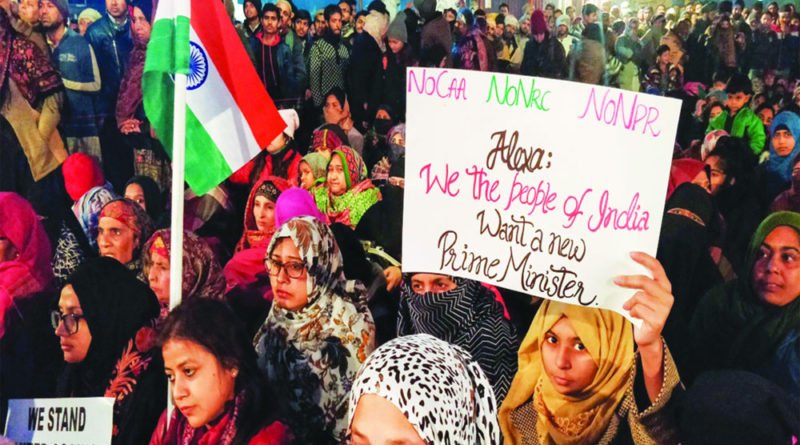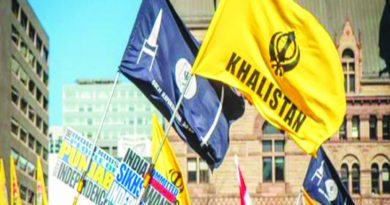Lessons from Shaheen Bagh
The Supreme Court judgment on the petitions pertaining to the three-month anti-CAA protests will restore some order in the way we express dissent
The recent judgement of the Supreme Court on the petitions pertaining to the three-month protests, held in Shaheen Bagh in South Delhi earlier this year, should clear the air in respect of the prevailing debate on how far one can go while exercising the right to dissent. The key point is that the occupation of public thoroughfares while registering a protest is not acceptable indefinitely.
This judgement will have long-term implications on how political battles will henceforth be fought when they spill out onto the streets, because if the right to protest is an untrammelled right, the constitutional scheme could get disturbed.
The judgement of the three-judge Bench, comprising Justices Sanjay Kishan Kaul, Aniruddha Bose and Krishna Murari, said that Article 19 was one of the cornerstones of the Constitution which conferred two treasured rights on citizens — the right to freedom of speech and expression under Article 19(1)(a) and the right to assemble peacefully without arms under Article 19(1)(b). “These rights, in cohesion, enable every citizen to assemble peacefully and protest against the actions or inactions of the State. The same must be respected and encouraged by the State, for the strength of a democracy such as ours lies in the same.” However, it noted that these rights were subject to reasonable restrictions. Referring to an earlier judgement of the court, it said, “each fundamental right, be it of an individual or of a class, does not exist in isolation and has to be balanced with every other contrasting right. It was in this respect, that in this case, an attempt was made by us to reach a solution where the rights of protesters were to be balanced with that of commuters”.
The court declared that democracy and dissent go hand in hand, but then the demonstrations expressing dissent have to be in designated places alone. “The present case was not even one of protests taking place in an undesignated area, but was a blockage of a public way which caused grave inconvenience to commuters. We cannot accept the plea of the applicants that an indeterminable number of people can assemble whenever they choose to protest.” The blockade had resulted in the closure of the Kalindi Kunj-Shaheen Bagh stretch, including the Okhla underpass, from December 15, 2019, onwards.
The central argument of those who objected to the Shaheen Bagh protest, including Dr Nand Kishore Garg, who petitioned the court, was that the protesters had blocked an important thoroughfare and caused enormous inconvenience to commuters. The right to protest should not result in the infringement of the right to free movement of other citizens. Dwelling on this issue, the court said: “We have, thus, no hesitation in concluding that such kind of occupation of public ways, whether at the site in question or anywhere else for protests, is not acceptable and the administration ought to take action to keep the areas clear of encroachments or obstructions.”
The court recalled the history of protest during the freedom movement. It said: “What must be kept in mind, however, is that the erstwhile mode and manner of dissent against colonial rule cannot be equated with dissent in a self-ruled democracy. Our constitutional scheme comes with the right to protest and express dissent but with an obligation towards certain duties.” This is a significant observation by the apex court. In fact, Dr BR Ambedkar, who headed the Constitution Drafting Committee, dwelt on this very issue in his concluding remarks in the Constituent Assembly on November 25, 1949, before the Assembly put its final stamp of approval on the Constitution.
In that speech, Dr Ambedkar made two observations, which are very relevant to the present debate on democracy and dissent in the country. He said: “The condemnation of the Constitution largely comes from two quarters, the Communist Party and the Socialist Party.” The communists do not like it because they want a Constitution based on the principle of dictatorship of the proletariat. “They (the communists) condemn the Constitution because it is based on parliamentary democracy.” The Socialists want to nationalise all private property without payment of compensation. Second, they want fundamental rights in the Constitution to be absolute and without any limitations, “so that if their party fails to come into power, they would have the unfettered freedom not merely to criticise, but also to overthrow the State”.
Just substitute the Congress party for the Socialist Party and it will appear as if Dr Ambedkar is talking about what is happening in India in the year 2020 where political parties, which have been rejected by the electorate, want to foment trouble on the streets to disturb the democratic process. Let us not forget that the Congress party’s vote share has crashed to less than 20 per cent and the vote share of the two communist parties has hit rock bottom and touched a low of 2.50 per cent.
The second aspect Dr Ambedkar highlighted relates to the modes of protest. He told the citizens what they must do if they wish to maintain democracy not merely in form but also in fact. The first thing we must do is to hold fast to the constitutional methods to achieve our social and economic objectives. “It means we must abandon bloody methods of revolution. It means that we must abandon the method of civil disobedience, non-cooperation and satyagraha.” These methods were okay when there were no constitutional methods of protest. “But where constitutional methods are open, there can be no justification for these unconstitutional methods. These methods are nothing but the grammar of anarchy and the sooner they are abandoned, the better for us.”
The Shaheen Bagh mode of protest falls into the category mentioned by Dr Ambedkar — organising a blockade to prevent people from using an important public thoroughfare and disrupting normal life. And let there be no confusion about the primary intent of those who promoted this “grammar of anarchy” — their dissatisfaction with the peoples’ verdict of 2014 and 2019 — more than anything else, and their desire to unsettle a duly elected Government. The objections to the Citizenship Amendment Act were just a façade.
Instead of promoting such chaos for several months, it would have been better for the protesters to move the Supreme Court against the law made by the Parliament. That would be the appropriate constitutional response that would have passed muster with Dr Ambedkar.
Hopefully, the apex court’s judgement should put an end to the Shaheen Bagh mode of protests and restore some order in the way we express dissent.
(The writer is an author specialising in democracy studies. Views expressed are personal)
Source: The Pioneer




